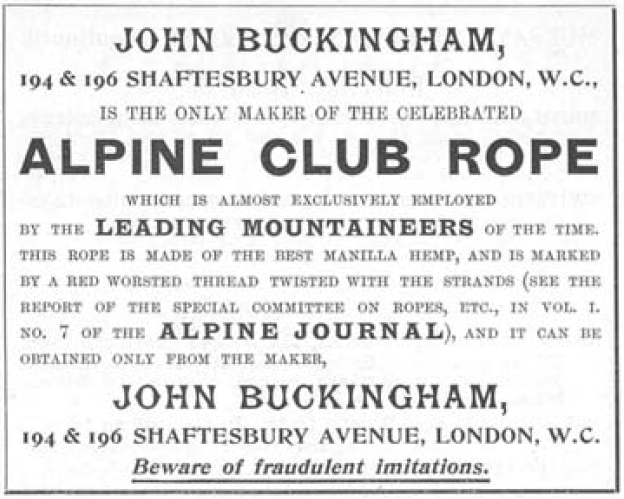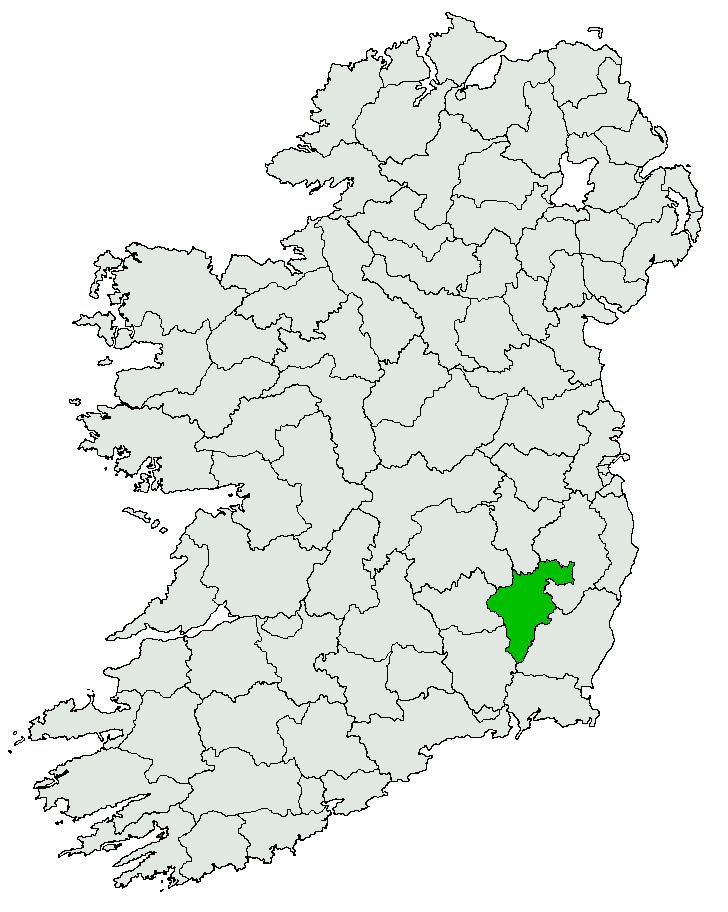|
John Ball (naturalist)
John Ball (20 August 1818 – 21 October 1889) was an Irish politician, naturalist and Alpine traveller. Background and education Ball was born in Dublin, the eldest son of Nicholas Ball, judge of the Court of Common Pleas (Ireland) and his wife Jane Sherlock. He was educated at Oscott College near Birmingham, and at Christ's College, Cambridge, where he was 41st Wrangler but as a Roman Catholic could not be admitted to a BA degree. He showed in his early years a taste for natural science, particularly botany; and after leaving Cambridge he travelled in Switzerland and elsewhere in Europe and North Africa, studying his favourite pursuits, and contributing papers on botany and the Swiss glaciers to scientific periodicals. Political career In 1846 Ball was made an assistant poor-law commissioner, but resigned in 1847, and in 1848 stood unsuccessfully as a parliamentary candidate for Sligo. In 1849 he was appointed second poor-law commissioner, but resigned in 1852 and success ... [...More Info...] [...Related Items...] OR: [Wikipedia] [Google] [Baidu] |
Under-Secretary Of State For The Colonies
The Under-Secretary of State for the Colonies was a junior Ministerial post in the United Kingdom government, subordinate to the Secretary of State for the Colonies and, from 1948, also to a Minister of State. Under-Secretaries of State for the Colonies, 1768–1782 In 1782, following the loss of the American colonies, the office was abolished, and its duties given to the Home Secretary. From there it passed to the War Office, which was later renamed the War and Colonial Office. In 1854 this office was split, and the Colonial Office reestablished. Parliamentary Under-Secretaries of State for the Colonies, 1854–1966 ''For earlier office-holders see Under-Secretary of State for War and the Colonies.'' ''Abolished 1966. Thereafter, see Under-Secretary of State for Commonwealth Affairs. Minister of State for the Colonies, 1948–1964 ''Abolished 1964. Thereafter, see Minister of State for Commonwealth Affairs.'' Permanent Under-Secretaries of State for the Colonies, 1825 a ... [...More Info...] [...Related Items...] OR: [Wikipedia] [Google] [Baidu] |
Cambridge
Cambridge ( ) is a university city and the county town in Cambridgeshire, England. It is located on the River Cam approximately north of London. As of the 2021 United Kingdom census, the population of Cambridge was 145,700. Cambridge became an important trading centre during the Roman and Viking ages, and there is archaeological evidence of settlement in the area as early as the Bronze Age. The first town charters were granted in the 12th century, although modern city status was not officially conferred until 1951. The city is most famous as the home of the University of Cambridge, which was founded in 1209 and consistently ranks among the best universities in the world. The buildings of the university include King's College Chapel, Cavendish Laboratory, and the Cambridge University Library, one of the largest legal deposit libraries in the world. The city's skyline is dominated by several college buildings, along with the spire of the Our Lady and the English Martyrs ... [...More Info...] [...Related Items...] OR: [Wikipedia] [Google] [Baidu] |
Dolomites
The Dolomites ( it, Dolomiti ; Ladin: ''Dolomites''; german: Dolomiten ; vec, Dołomiti : fur, Dolomitis), also known as the Dolomite Mountains, Dolomite Alps or Dolomitic Alps, are a mountain range located in northeastern Italy. They form part of the Southern Limestone Alps and extend from the River Adige in the west to the Piave Valley (Pieve di Cadore) in the east. The northern and southern borders are defined by the Puster Valley and the Sugana Valley (Italian: ''Valsugana''). The Dolomites are located in the regions of Veneto, Trentino-Alto Adige/Südtirol and Friuli Venezia Giulia, covering an area shared between the provinces of Belluno, Vicenza, Verona, Trentino, South Tyrol, Udine and Pordenone. Other mountain groups of similar geological structure are spread along the River Piave to the east – ''Dolomiti d'Oltrepiave''; and far away over the Adige River to the west – ''Dolomiti di Brenta'' (Western Dolomites). A smaller group is called ''Piccole Dolomiti'' (Li ... [...More Info...] [...Related Items...] OR: [Wikipedia] [Google] [Baidu] |
Alpine Club (UK)
The Alpine Club was founded in London in 1857 and is the world's first mountaineering club. The primary focus of the club is to support mountaineers who climb in the Alps and the Greater Ranges of the world's mountains. History The Alpine Club was founded on 22 December 1857 by a group of British mountaineers at Ashley's Hotel in London. The original founders were active mountaineers in the Alps and instrumental in the development of alpine mountaineering during the Golden Age of Alpinism (1854–1865). E. S. Kennedy was the first chairman of the Alpine Club but the naturalist, John Ball, was the first president. Kennedy, also the first vice-president, succeeded him as president of the club from 1860 to 1863. In 1863, the club moved its headquarters to the Metropole Hotel. The Alpine Club is specifically known for having developed early mountaineering-specific gear including a new type of rope. The goal was to engineer a strong and light rope that could be carried easily ... [...More Info...] [...Related Items...] OR: [Wikipedia] [Google] [Baidu] |
Limerick County (UK Parliament Constituency)
County Limerick was a parliamentary constituency in Ireland, which returned two Members of Parliament (MPs) to the House of Commons of the Parliament of the United Kingdom from 1801 to 1885. Boundaries This constituency comprised County Limerick, except for the parliamentary borough of Limerick, which was within the Limerick City constituency. Members of Parliament Elections Elections in the 1830s Lloyd's death caused a by-election. * On petition, O'Grady was unseated in favour of Massy Dawson. Elections in the 1840s O'Brien was adjudged guilty of high treason, causing a by-election. Elections in the 1850s Dickson's death caused a by-election. Monsell was appointed a clerk of ordnance, requiring a by-election. Goold's death caused a by-election. Monsell was appointed President of the Board of Health, requiring a by-election. ... [...More Info...] [...Related Items...] OR: [Wikipedia] [Google] [Baidu] |
Houghton Swi 688
Houghton may refer to: Places Australia * Houghton, South Australia, a town near Adelaide * Houghton Highway, the longest bridge in Australia, between Redcliffe and Brisbane in Queensland * Houghton Island (Queensland) Canada *Houghton Township, Ontario, a former township in Norfolk County, Ontario New Zealand * Houghton Bay South Africa * Houghton Estate, a suburb of Johannesburg United Kingdom *Hanging Houghton, Northamptonshire *Houghton, Cambridgeshire * Houghton, Cumbria *Houghton, East Riding of Yorkshire *Houghton, Hampshire *Houghton, Norfolk *Houghton Saint Giles, Norfolk * Houghton, Northumberland, a location in the United Kingdom * Houghton, Pembrokeshire *Houghton, West Sussex *Houghton-le-Side, Darlington *Houghton-le-Spring, Sunderland *Houghton Park, Houghton-le-Spring *Houghton Bank, Darlington *Houghton Conquest, Bedfordshire *Houghton on the Hill, Leicestershire *Houghton on the Hill, Norfolk *Houghton Regis, Bedfordshire *New Houghton, Derbyshire * Little Ho ... [...More Info...] [...Related Items...] OR: [Wikipedia] [Google] [Baidu] |
William Jackson Hooker
Sir William Jackson Hooker (6 July 178512 August 1865) was an English botanist and botanical illustrator, who became the first director of Kew when in 1841 it was recommended to be placed under state ownership as a botanic garden. At Kew he founded the Herbarium and enlarged the gardens and arboretum. Hooker was born and educated in Norwich. An inheritance gave him the means to travel and to devote himself to the study of natural history, particularly botany. He published his account of an expedition to Iceland in 1809, even though his notes and specimens were destroyed during his voyage home. He married Maria, the eldest daughter of the Norfolk banker Dawson Turner, in 1815, afterwards living in Halesworth for 11 years, where he established a herbarium that became renowned by botanists at the time. He held the post of Regius Professor of Botany at Glasgow University, where he worked with the botanist and lithographer Thomas Hopkirk and enjoyed the supportive friendshi ... [...More Info...] [...Related Items...] OR: [Wikipedia] [Google] [Baidu] |
Canadian Rockies
The Canadian Rockies (french: Rocheuses canadiennes) or Canadian Rocky Mountains, comprising both the Alberta Rockies and the British Columbian Rockies, is the Canadian segment of the North American Rocky Mountains. It is the easternmost part of the Canadian Cordillera, which is the northern segment of the North American Cordillera, the expansive system of interconnected mountain ranges between the Interior Plains and the Pacific Coast that runs northwest–southeast from central Alaska to the Isthmus of Tehuantepec in Mexico. Canada officially defines the Rocky Mountains system as the mountain chains east of the Rocky Mountain Trench extending from the Liard River valley in northern British Columbia to the Albuquerque Basin in New Mexico, not including the Mackenzie, Richardson and British Mountains/Brooks Range in Yukon and Alaska (which are all included as the "Arctic Rockies" in the United States' definition of the Rocky Mountains system). The Canadian Rockies, bein ... [...More Info...] [...Related Items...] OR: [Wikipedia] [Google] [Baidu] |
Ball Range
The Ball Range is a mountain range on the Continental Divide between Vermilion Pass and Red Earth Pass in Kootenay National Park, Canada. The range is named after John Ball, a politician who helped secure funding for the Palliser expedition. It extends over 465 km2 (179 mi2), and measures 35 km (22 mi) from North to South and 26 km (16 mi) from East to West. Peaks This range includes the following mountains and peaks: See also * Ranges of the Canadian Rockies The Canadian Rockies are a segment of the North American Rocky Mountains found in the Canadian provinces of Alberta and British Columbia. List of ranges There is no universally accepted hierarchical division of the Canadian Rockies into subranges. ... References Mountain ranges of British Columbia Ranges of the Canadian Rockies {{EastKootenay-geo-stub ... [...More Info...] [...Related Items...] OR: [Wikipedia] [Google] [Baidu] |
British House Of Commons
The House of Commons is the lower house of the Parliament of the United Kingdom. Like the upper house, the House of Lords, it meets in the Palace of Westminster in London, England. The House of Commons is an elected body consisting of 650 members known as members of Parliament (MPs). MPs are elected to represent constituencies by the first-past-the-post system and hold their seats until Parliament is dissolved. The House of Commons of England started to evolve in the 13th and 14th centuries. In 1707 it became the House of Commons of Great Britain after the political union with Scotland, and from 1800 it also became the House of Commons for Ireland after the political union of Great Britain and Ireland. In 1922, the body became the House of Commons of the United Kingdom of Great Britain and Northern Ireland after the independence of the Irish Free State. Under the Parliament Acts 1911 and 1949, the Lords' power to reject legislation was reduced to a delaying power. The gov ... [...More Info...] [...Related Items...] OR: [Wikipedia] [Google] [Baidu] |
Carlow County (UK Parliament Constituency)
Carlow County was a parliamentary constituency in Ireland, which from 1801 to 1885 returned two Members of Parliament (MPs) to the House of Commons of Great Britain and Ireland, and one MP from 1885 to 1922. Boundaries and boundary changes This constituency comprised the whole of County Carlow, except for Carlow Borough 1801–1885. It returned two MPs 1801–1885, but only one from 1885 to 1922. This was the only Irish county not divided for Parliamentary purposes in the redistribution of 1885. It was thus the only Irish county constituency to exist at every general election from the union with Great Britain to the partition of Ireland. The constituency ceased to be entitled to be represented in the UK House of Commons on the dissolution of 26 October 1922, shortly before the Irish Free State came into legal existence on 6 December 1922. Politics In the 1918 election the Sinn Féin candidate was unopposed. Dáil Éireann 1918–1922 The constituency was, in Irish republic ... [...More Info...] [...Related Items...] OR: [Wikipedia] [Google] [Baidu] |







